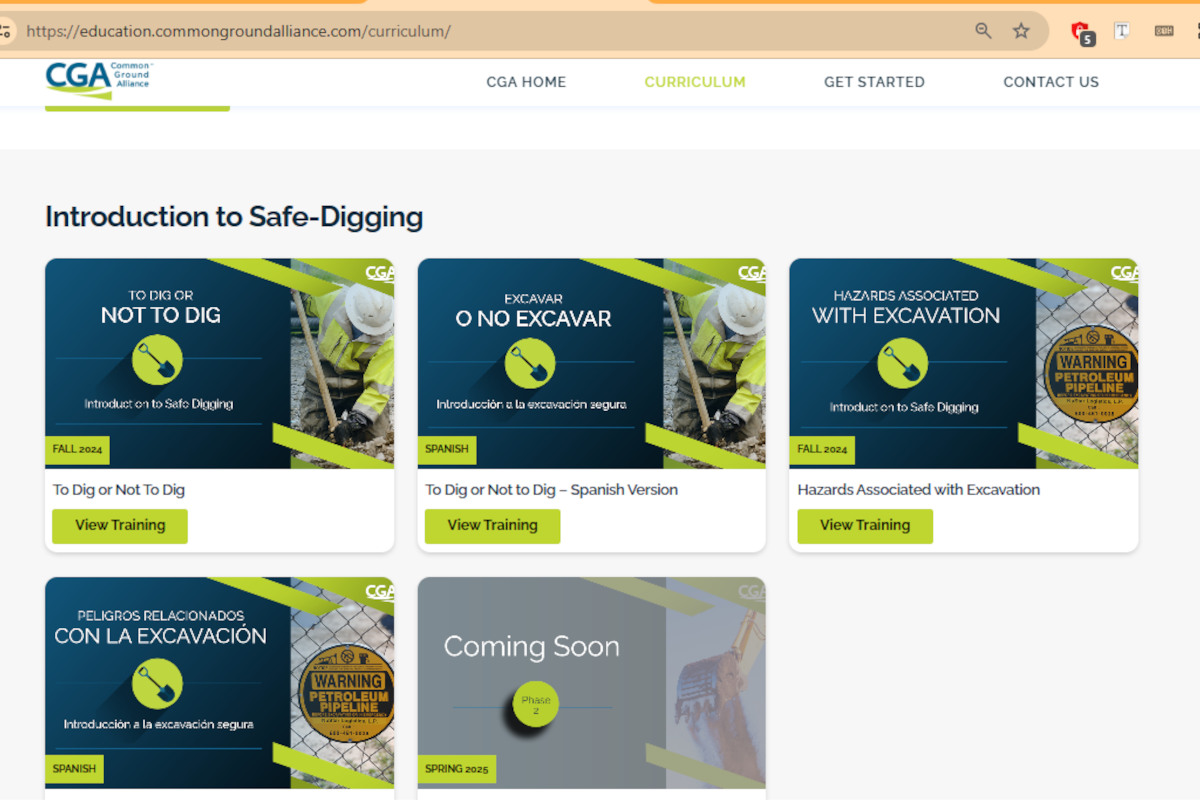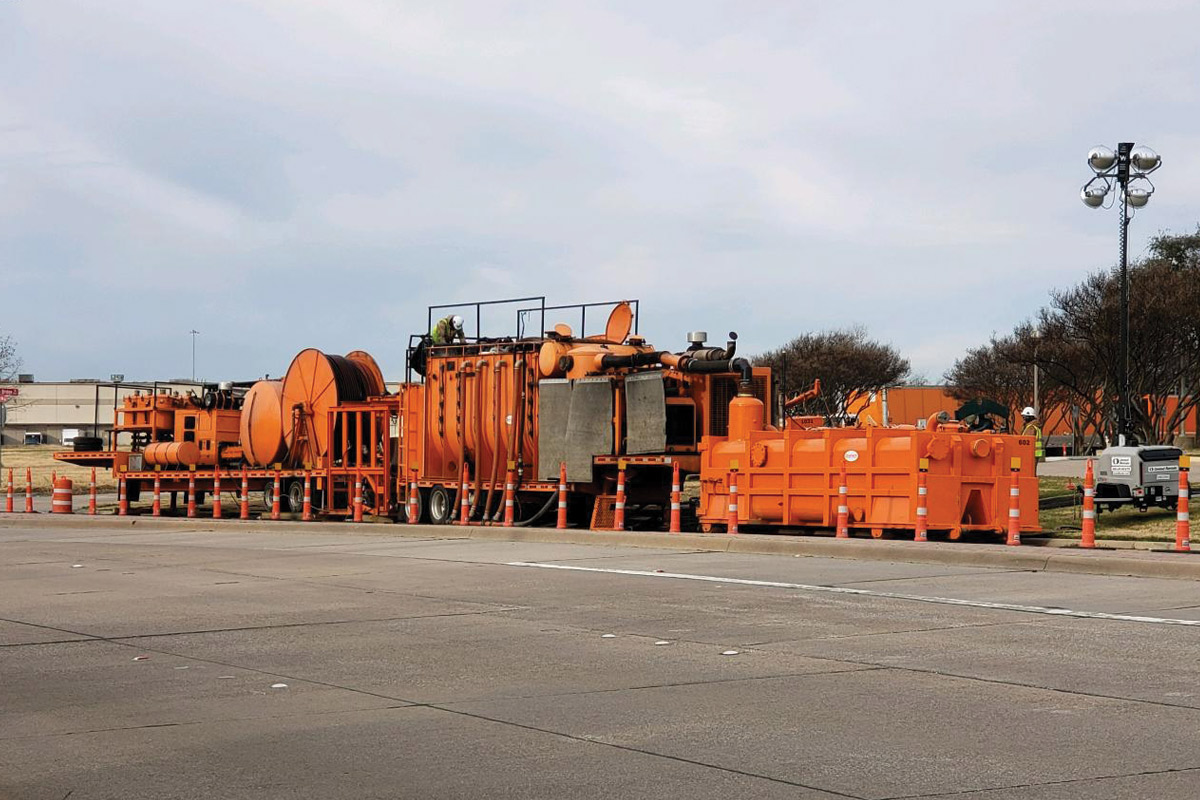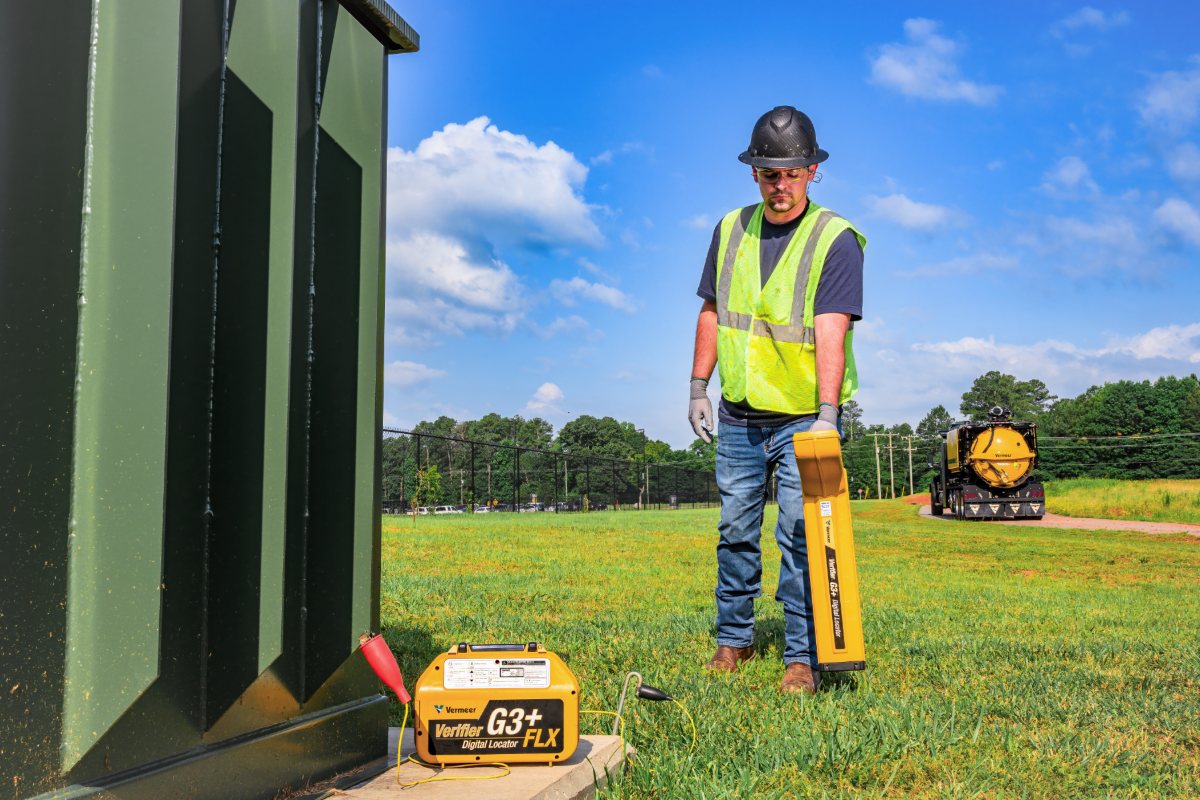
Clay County Utility Authority Embraces Locating
October 6, 2015

Currently, Eure’s crew averages 50 to 70 locates a week (the average new residential home will result in approximately 10 locate tickets).
Clay County, Fla., southwest of Jacksonville and west of historic St. Augustine, is home to more than 192,000 people. Many of these people commute to Jacksonville for work. Of the county’s 644 sq miles, 39 sq miles are water.
The Clay County Utility Authority (CCUA) provides water, sanitary sewer and reclaimed water services within unincorporated areas of the county. CCUA operates on fees and without tax money.
Serving nearly 50,000 customers, buried pipeline infrastructure includes 635 miles of water mains, 436 miles of gravity-flow sewer mains, 191 miles of sewer force mains and 164 miles of pipe that distributes reclaimed water to golf courses and for irrigation of lawns. The CCUA operates and maintains all main pipelines; water service lines and sewer laterals from the main to the house or building are the responsibility of property owners.
Protecting the CCUA’s buried pipelines is the responsibility of the CCUA’s Locate and Right-of-Way Maintenance Department composed of four full-time employees.
The nation’s One-Call system is a vital element in on-going efforts to prevent damage to buried pipes and cables. A telephone call to 811 rings the nearest state One-Call center, which arranges for utility providers who are members to locate and mark buried lines at a specified construction site.
Read our most recent story from the Common Ground Alliance, which highlights the need for one-call services.
While many utility providers hire contractor locating companies to make “call-before-you-dig” facility locates, CCUA does the job with its own personnel. In addition to locating, members of the department also are responsible for maintaining easements, valve boxes and manholes.
“We take great pride in our locating skills,” said Tommy Eure, supervisor of locate and right-of-way maintenance services. “We’ve been a member of Sunshine 811 [Florida’s One-Call agency] since 1997. You won’t find many locate guys anywhere that do a better job than we do. Since 1997, I believe we’ve had three hits that could be attributed to our locate errors.”
Currently, Eure’s crew averages 50 to 70 locates a week (the average new residential home will result in approximately 10 locate tickets). The pace has slowed since the 1990s when they were making 1,600 per month to accommodate the rapid development of new residential subdivisions. It was a heavy workload.
“We added an extra person and just kept at it,” said Eure. “Looking back, I don’t know how we managed. Our process to locate was manual and very time consuming. We did not have tracer wire or the ground penetrating radar used today. What previously took a locator two hours to complete now can take 15 to 30 minutes to complete. Today, the One-Call process is greatly improved and locate tickets can be generated online — hand-written paperwork is eliminated, and tickets can be initiated quickly online on nights and weekends.”
Today CCUA’s staff uses two types of locating equipment: electromagnetic and ground penetrating radar.
Electromagnetic Locators include a lightweight, handheld receiver and compact transmitter. For metallic pipe and communications cable the transmitter is connected to cable or pipe and sends current through the line to create a signal which is detected by the receiver. Plastic pipes must have a tracer wire energized by the transmitter. To make a locate, the operator walks above where utilities are expected to be, and the receiver locates underground pipe or cable, displaying information in a window at the top of the receiver.
“We use Subsite UtiliGuard electromagnetic equipment,” Eure said. “I’ve been locating a long time, and this is one of the more user-friendly units I’ve found, and that’s important. The more user-friendly and intuitive they are, the better the operator can do his work.”
UtiliGuard equipment has numerous accuracy-enhancing features. In addition to 70 standard frequencies, Ambient Interference Measurement (AIM) scans the surrounding area around locates for noise, and recommends the best frequencies to make the fastest, most accurate locates. The dual-output transmitter can be connected to two utilities at the same time.
UtiliGuard is the only locating system that provides the horizontal and vertical distance (depth) to the utility, to make accurate locates of obstructed utilities. The six-button operator interface is easy to learn and use, and the high-contrast LED display is visible in all conditions, including direct sunlight. The receiver can communicate with other devices with Bluetooth technology.
“A problem I’ve seen with other wire locators is getting them to ground properly and that doesn’t happen with UtiliGuard,” Eure added.
Ground Penetrating Radar (GPR) Locators use radio waves to identify locations of buried utilities and other objects. No electrical current is needed for this equipment.
GPR locators transmit high-frequency radio waves into the ground. When a wave hits a buried object or a boundary with different dielectric constants, the instrument records variations in the reflected return signal, which are processed and displayed to the operator on a screen, identifying the location of the pipe, as well as other buried objects such as concrete, storage tanks and conditions such as voids.
GPR performance varies with soil conditions and is ineffective in most dense soils, a limitation that has discouraged some from investing in the equipment.
However, Eure said Clay County couldn’t do without its GPR equipment.
The GPR equipment operated by the county is a Subsite 2450GR model mounted on a four-wheel cart pushed across the surface by the operator, similar to a lawn mower. Its earth-engaged antenna makes direct contact with the terrain, maximizing signal strength. The dual-frequency antenna simultaneously sweeps in two frequencies, allowing the operator to see both deep and shallow objects. The cart design allows the operator to scan uneven terrain as well as level surfaces. The display provides clear, easy-to-read images.
“To arbitrarily reject GPR locators is a big mistake,” Eure believes. “They play a key role in our locating work — we use them every day.”
Eure said there have been substantial improvements in GPR locators. Eure said there is a lot of clay soil in Clay County, but locate crews get 85 to 90 percent usage of GPR units.
“The only time we can’t get a signal is in undisturbed blue clay,” he said.
The locating process of CCUA has changed significantly since Eure joined the organization.
“I’ve been locating for more than 30 years, and actually was locating county sewer lines before I went to work there,” Eure said. “In the early 1990s, I was working for a cable television installation contractor, and I would go to the authority office and get as-builts and make the locates myself.”
Eure joined the authority in 1995, became responsible for locates, and set about establishing formalized locating procedures. Training is important, and Eure personally trains each new locator. Current members of the locate team have been with CCUA from one to 15 years.
Many county sewer lines have been in place since the 1950s.
“If we can’t pinpoint a line with electromagnetic or GPR equipment, we’ll go to the site and uncover it manually,” said Eure. “Whatever it takes, we will find and accurately locate every ticket.”
Eure anticipates the number of locates will increase with the completion of the First Coast Outer Beltway project and several residential projects that are currently on the radar for Clay County. He is excited about Clay County’s projected growth and the technology that continues to advance enabling CCUA is to efficiently and effectively respond to locate tickets.
“Accurate locates not only protect buried utility lines,” he concluded, “but also provide a valuable service that contributes to public safety.”
Jeri Lamerton is marketing manager at Subsite Electronics.




